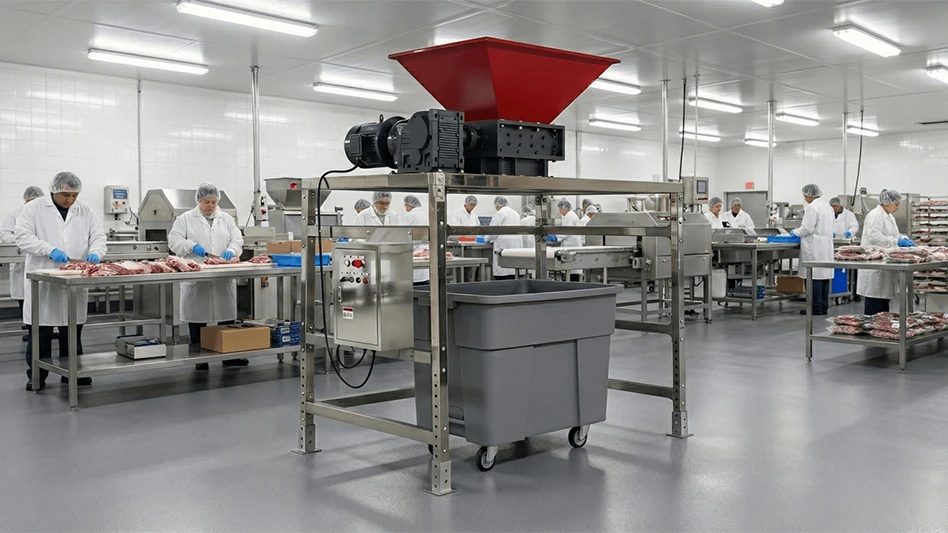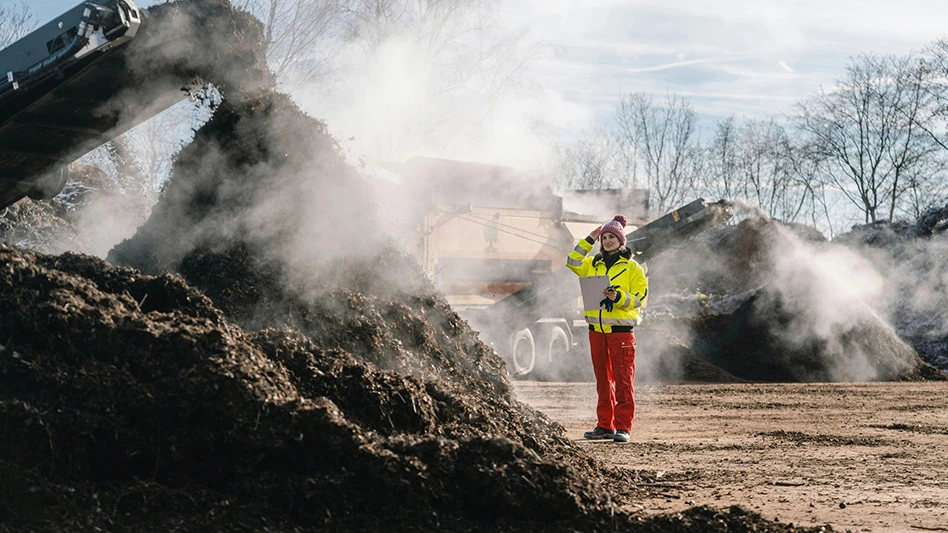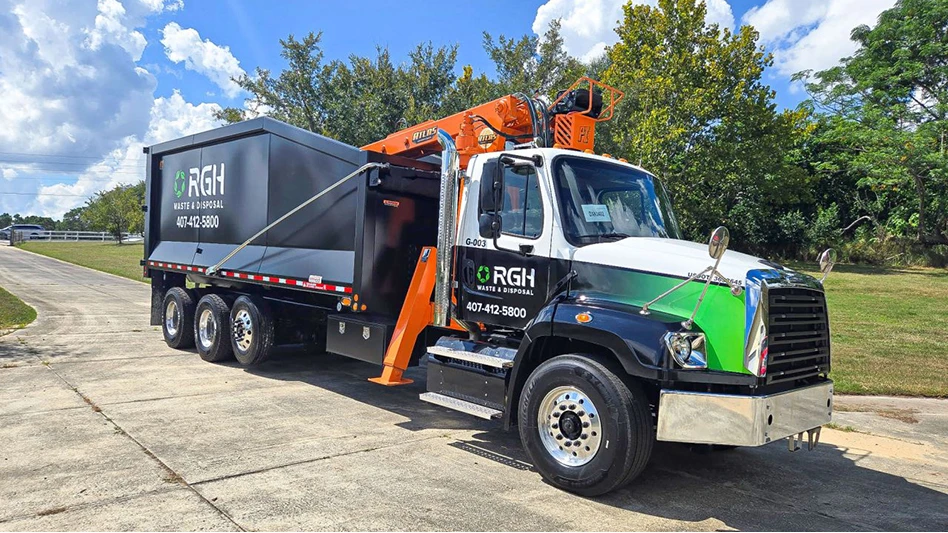 For more than a century, municipal solid waste (MSW) has been converted into energy or fuels through combustion and, in select instances, through other modes. Since the 1890s, the combustion of MSW with energy recovery (now known as waste-to-energy, or WTE) has matured as safe, effective and environmentally acceptable.
For more than a century, municipal solid waste (MSW) has been converted into energy or fuels through combustion and, in select instances, through other modes. Since the 1890s, the combustion of MSW with energy recovery (now known as waste-to-energy, or WTE) has matured as safe, effective and environmentally acceptable.
Today there are 86 WTE facilities in the United States, which together reliably process more than 29 million tons per year, or roughly 10 percent of the nation’s MSW. Recently, as U.S. federal and state governments established programs that support energy independence and promote the use of fossil fuel alternatives, the application of WTE as a source of renewable energy, fuels and chemical feedstocks has gained popularity with many policymakers. Their support and the introduction of incentives for use of renewable energy have encouraged the acceleration of development of a variety of conversion technologies that utilize MSW. These developments also have prompted serious consideration by local governments to seek more effective ways to manage MSW disposal.
Which of these competing technologies are demonstrating economic and technological viability and hold the most promise as short- and long-term solutions for solid waste management?
Mass-Burn and RDF Technologies
Mass-burn WTE is the most common and mature waste-to-energy technology. With mass burn, solid waste is combusted at high temperatures with minimal preprocessing, and heat is recovered in a boiler for production of steam and electricity. No new greenfield mass-burn WTE facilities have been built in the United States for more than 20 years, though there have been several expansions of existing facilities, including in Hillsborough County, Fla.; Lee County, Fla.; Honolulu; and Olmstead County, Minn. One new WTE facility is under construction in Palm Beach County, Fla., and one is in development in Frederick, Md.
MSW also may be mechanically processed (shredded, screened, etc.) to produce refuse-derived fuel (RDF), which can be fired in specifically designed dedicated boilers with 100-percent-RDF firing or co-fired with other solid fuels, such as coal or wood. In LaCrosse, Wis., Excel Energy owns and operates two fluidized bed power production units that have been co-firing RDF and hog fuel on a 50/50 heat rate basis since 1987. Since the late 1970s and early 1980s, other facilities in Detroit; Hartford, Conn.; Palm Beach, Fla.; and Rochester, Mass., have successfully been using a simple RDF fired 100 percent in dedicated boilers to produce power. These dedicated boilers are similar to hundreds across the U.S. that have been used to burn bagasse, wood chips and coal in semisuspension.
Gaining Attention
In recent years, conversion technologies, such as pyrolysis, gasification and plasma arc, have presented additional possibilities for the conversion of waste into energy and specialty higher-valued products, such as biodiesel or ethanol. Through thermal conversion of the waste, with or without oxygen/air, synthetic gas (syngas) or liquid fuels are produced that then may be combusted, following a multitude of possible pathways, shown in the Conversion Technology Pathways diagram available at www.REWmag.com/conversion-technology-pathways.aspx.
These technologies have limited demonstration at facilities in Europe, Asia and Canada. The most prominent of these alternative technologies includes gasification and pyrolysis.
Gasification – Feedstock is heated in an oxygen-poor environment to produce a synthesis gas, called syngas, which consists primarily of hydrogen, carbon monoxide, carbon dioxide and trace compounds. Syngas can be used as a fuel and combusted to produce steam and/or electricity or as feedstock for production of chemicals. Plasma arc gasification includes plasma torch, which uses an electric current to produce a very high temperature to generate syngas from waste or to clean the syngas.
Although gasification has been used for many years to process agricultural and wood waste, experience utilizing MSW in North America and worldwide has been mixed.
Currently, the field of gasification participants in North America is growing. Several facilities are in advanced stages of development and construction, including projects led by Enerkem in Edmonton, Alberta, and Varennes, Quebec, Canada; Plasco in Ottawa, Canada; Dynamis Energy in Ada County, Idaho, and Puerto Rico; and Fulcrum BioEnergy in McCarran, Nev. Ineos Bio in Vero Beach, Fla., has begun to operate, gasifying organic waste.
Pyrolysis – Feedstock is heated without oxygen (or air), generating vapor, char and inorganic residue. The vapor is condensed and processed into a crude, oil-like liquid material that can be mixed with crude oils and further distilled to a variety of grades of gasoline.
Although pyrolysis is a well-known technology in the oil industry, current experiences processing mixed waste and separate fractions of waste haven’t been remarkable. The firms in North America that have found the greatest success using pyrolysis for fractions of the waste stream have been those that process nonrecyclable plastic waste materials, including Agilyx, Climax Global, Plastic2Oil (JBI) and RES Polyflow.
No gasification, pyrolysis or plasma arc facilities using MSW as a feedstock currently operate on a commercial scale in the United States. Nevertheless, ongoing attempts to develop these technologies outside of a laboratory or a pilot-scale plant continue.
Anaerobic Digestion – Organic waste undergoes decomposition in an oxygen-depleted environment, through microbe-facilitated biological processes, producing biogas (with up to 65 percent methane content) and digestate. Anaerobic digestion has been applied to activated sludge processing at wastewater treatment plants for more than half a century and, more recently, applied to processing organic waste streams since the 1990s, primarily in Europe. The biogas product from many anaerobic digestion facilities can be used for combined heat and power production, though it also can be upgraded to pipeline quality as a replacement for natural gas. The digestate is typically aerobically processed into a compost or soil fertilizer product.
No U.S. facilities are currently commercially operating on the organic fraction of MSW. However, multiple firms are in the process of developing projects where anaerobic digestion is utilized in the conversion of the organic fraction of MSW to biogas, ethanol and electricity, including CR&R Perris in Riverside, Calif., using Dranco technology; Harvest Power throughout the U.S. and Canada; W2E Organic Power in Columbia, S.C.; and Quasar in Ohio.

Overcoming Challenges
A key challenge for developing technologies is how to achieve economical feasibility when scaling to commercial stage. This is primarily in light of the limited availability of the feedstock, the limited incentives available and the fact that their gate fees have to compete with landfilling fees. The Technology Maturity and Risk table, located on p. 27, summarizes the maturity and risk of each of the technologies.
When communities are considering the use of WTE facilities for conversion of MSW, or any alternative method of MSW processing, environmental impacts are an area of interest and possible concern for decision makers and the public. It is imperative that the facility used for conversion of MSW be able to meet federal and local requirements for air pollution and water runoff control.
Life-cycle analyses have been performed comparing greenhouse gas (GHG) emissions and environmental impacts of WTE with landfill disposal. The U.S. EPA’s Decision Support Tool shows that WTE has a lower impact because:
- For every megawatt of electricity generated through the combustion of solid waste, a megawatt of electricity from conventional power plants is avoided, creating a net savings of emissions of greenhouse gasses (GHGs), i.e., carbon dioxide.
- A modern municipal WTE facility separates ferrous and/or nonferrous metals for recycling—a more energy-efficient production method than mining virgin materials for production of new metals. As a result, significant energy is saved and additional GHG emissions are avoided.
- When a ton of solid waste is delivered to a WTE facility, the methane it would have generated if it were landfilled is avoided.
The waste conversion technologies that are developing the capability to process waste feedstocks offer a range of alternative solutions to waste disposal and renewable energy production.
Many companies and technology configurations are still in the process of developing their first commercial applications for processing fractions of MSW and waste feedstocks. The U.S. market has seen many developers and startups initiate projects and agreements with communities for implementation of conversion technology over the past few years, but commercial-scale successes have yet to come to fruition.
As the construction and completion milestones for these projects remain unmet, it appears that several years will be required before we see which technologies prove to be economical and reliable options for the disposal of MSW and the generation of renewable energy.
Until then, municipalities and companies wanting to implement waste conversion technology projects will be wise to make programmatic changes that improve their management of waste and use of fuels and, at the same time, set the stage for streamlined integration of waste conversion technologies into their operations once these technologies have matured.
The authors are consultants with Gershman, Brickner & Bratton Inc., solid waste management consultants, Fairfax, Va., and can be contacted at erice@gbbinc.com and at larsova@gbbinc.com. More information can be found at www.gbbinc.com.
Conversion Pathways
A diagram illustrating the many paths MSW can take to be converted into fuel and energy is available at www.REWmag.com/conversion-technology-pathways.aspx.
Latest from Waste Today
- New York finalizes greenhouse gas emissions reporting regulations
- EPA selects 2 governments in Pennsylvania to receive recycling, waste grants
- NWRA Florida Chapter announces 2025 Legislative Champion Awards
- Yolo County reports fatality at Central Landfill
- New Way expands Canadian presence with Joe Johnson Equipment partnership
- Buffalo Biodiesel shares updates on facility modernization, NYSDEC compliance
- CETY launches HTAP platform for anaerobic digestion facilities
- Terex Ecotec announces Blue Machinery as distributor





